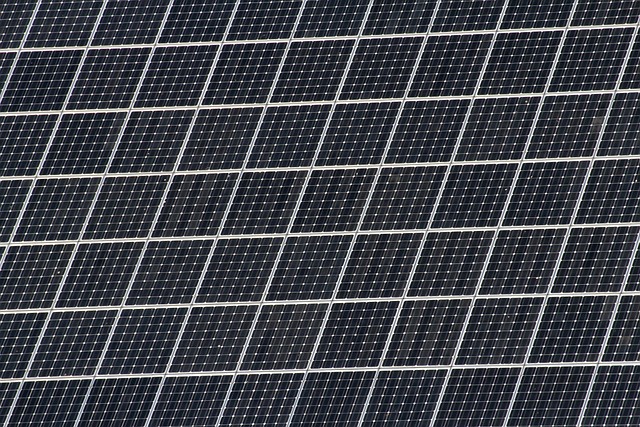
Solar Panels and Sustainability: A Bright Outlook
The ongoing quest for sustainable energy solutions has never been more critical. With the impacts of climate change becoming increasingly evident, innovative technologies such as solar panels have emerged as a central focus in efforts to create a more sustainable future. This article delves into the fascinating relationship between solar panels and sustainability, exploring how they contribute to environmental conservation, economic benefits, and energy independence.
The Fundamentals of Solar Energy
Solar energy is derived from the sun’s radiation, which can be harnessed using solar panels. These panels are made up of photovoltaic (PV) cells that convert sunlight directly into electricity. The technology has evolved significantly since its inception, with improvements in efficiency, cost-effectiveness, and scalability making solar power one of the most accessible forms of renewable energy.
Environmental Benefits of Solar Panels
One of the most compelling arguments for the widespread adoption of solar panels is their positive impact on the environment. Traditional energy sources, such as coal and natural gas, release significant amounts of carbon dioxide and other greenhouse gases, contributing to air pollution and climate change. Solar energy, on the other hand, is clean and renewable, generating electricity without harmful emissions.
Reduction of Carbon Footprint
The installation of solar panels can drastically reduce an individual’s or business’s carbon footprint. By generating power from the sun, solar energy systems contribute to a decline in reliance on fossil fuels. According to the U.S. Environmental Protection Agency (EPA), solar energy helps prevent the emission of millions of tons of carbon dioxide each year.
Conserving Water Resources
Solar power generation uses significantly less water than traditional energy production methods. For instance, thermoelectric power plants that rely on coal, gas, or nuclear energy require vast amounts of water for cooling processes. In contrast, solar panels require little to no water to operate, thereby conserving this precious resource and reducing the stress on local water supplies.
Minimizing Land Use and Habitat Disruption
With advancements in solar technology, various deployment methods minimize land use and habitat disruption. Rooftop solar installations allow urban structures to harness solar energy without needing additional land. Moreover, solar farms can be strategically located on previously disturbed lands, such as brownfields or rooftops of commercial buildings, reducing their ecological footprint significantly.
Economic Advantages of Solar Energy
Aside from environmental benefits, solar panels also offer numerous economic advantages that contribute to sustainability. The transition to solar power is not merely a trend; it is reshaping the energy economy and creating new opportunities for businesses and communities.
Job Creation
The solar industry has experienced rapid growth, creating millions of jobs worldwide. From manufacturing and installation to maintenance and sales, the demand for skilled workers in the solar sector continues to rise. The Solar Foundation’s National Solar Jobs Census indicates that the U.S. solar workforce has grown dramatically, even amid broader economic uncertainties.
Long-Term Savings
Investing in solar panels can lead to significant long-term savings on energy bills. Despite the initial costs of installation, solar panels can pay for themselves within a few years due to reduced electricity bills and available incentives. Many governments offer tax credits, rebates, and financing options to help offset the up-front investment, making solar power not only sustainable but economically viable as well.
Energy Independence and Resilience
Solar energy can enhance energy independence for individuals, communities, and countries alike. By reducing reliance on imported fossil fuels, nations can secure their energy future and contribute to global stability. Decentralized solar energy systems, such as community solar projects or microgrids, can bolster local energy resilience, decreasing vulnerability to disruptions from extreme weather events or geopolitical tensions.
The Role of Policy and Innovation
The growth of solar energy relies heavily on supportive policies and continuous innovation. Governments play a crucial role in promoting solar energy adoption through legislation, subsidies, and public awareness campaigns. Moreover, ongoing research is vital to enhancing solar technology, improving efficiency, and reducing production costs.
Global Initiatives and Agreements
International agreements, such as the Paris Agreement, have encouraged nations to commit to reducing greenhouse gas emissions, which has increased interest in renewable energy sources like solar. Countries are implementing ambitious renewable energy targets to transition away from fossil fuels and toward cleaner energy sources.
Technological Advancements
Recent innovations, such as bifacial solar panels, energy storage systems, and solar tracking technologies, have significantly increased the efficiency and reliability of solar energy. These advances empower solar systems to capture more sunlight and store energy, providing a more consistent power supply and alleviating concerns about energy availability during night or cloudy days.
Overcoming Challenges in Solar Adoption
Despite its many benefits, the adoption of solar panels is not without challenges. Addressing these hurdles is essential for maximizing the potential of solar energy in the pursuit of sustainability.
Initial Costs and Financing
The up-front costs associated with purchasing and installing solar systems can be a significant barrier for many homeowners and businesses. While prices have decreased in recent years, access to affordable financing options remains crucial. Innovative financing solutions, such as solar leases, power purchase agreements (PPAs), and community solar initiatives, can help alleviate the initial financial burden.
Intermittency and Reliability
Solar energy generation is inherently intermittent, as it relies on sunlight availability. To address this issue, energy storage solutions, such as batteries, are essential. Effective energy management and storage systems can ensure a consistent supply of electricity, even when sunlight is not accessible.
Policy and Regulatory Barriers
In some regions, outdated regulations and unfavorable policies can hinder solar panel adoption. Efforts to modernize these frameworks to support renewable energy projects are crucial for enabling a smooth transition to solar power. Advocacy and teamwork among industry stakeholders, government representatives, and customers are necessary to implement effective policies to promote solar energy.
Looking to the Future
The future of solar energy looks remarkably promising, driven by the urgent need for sustainable solutions and the continuous evolution of technology. As more individuals and businesses recognize the value of adopting solar panels, their widespread use will undoubtedly contribute to a healthier planet.
Public awareness and advocacy will play a significant role in the future landscape of solar energy. As educational initiatives and community engagement grow, more people will understand the benefits of solar technology, encouraging broader adoption and innovation.
Investments in research and development will continue to unlock new methods for harnessing solar energy more efficiently and effectively. As technology progresses, we can expect breakthroughs in solar energy generation and integration with other renewable sources, such as wind and hydroelectric power.
Conclusion
Solar panels embody a powerful symbol of sustainability, bridging the gap between energy needs and environmental stewardship. The transition to solar energy not only serves to mitigate climate change but also fosters economic growth, energy independence, and resilience in communities worldwide. With a continued commitment to innovation, supportive policies, and public engagement, the future of solar energy shines brightly as an essential element in our global strategy to achieve sustainability and combat climate change.



